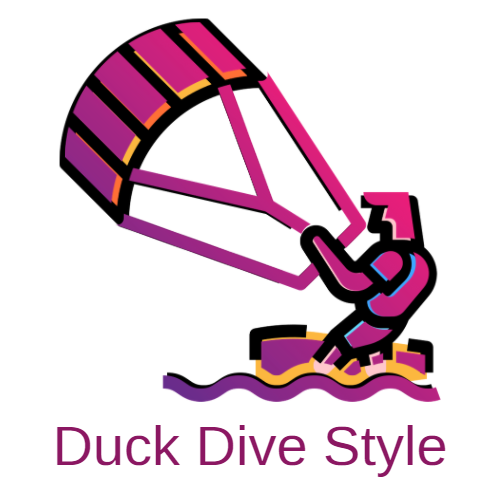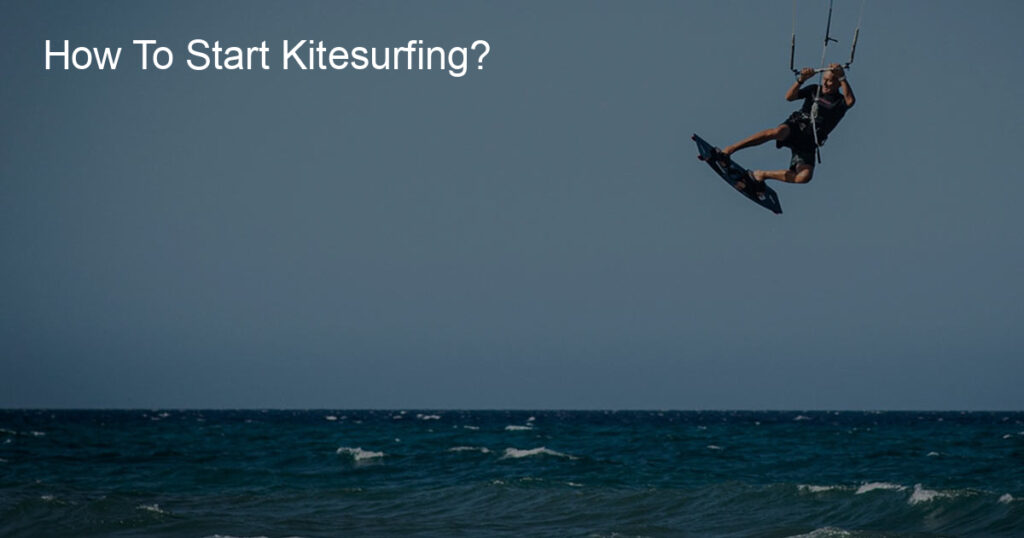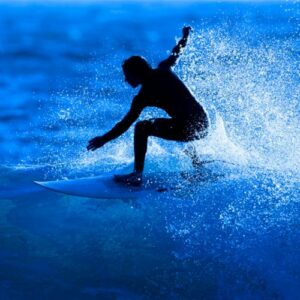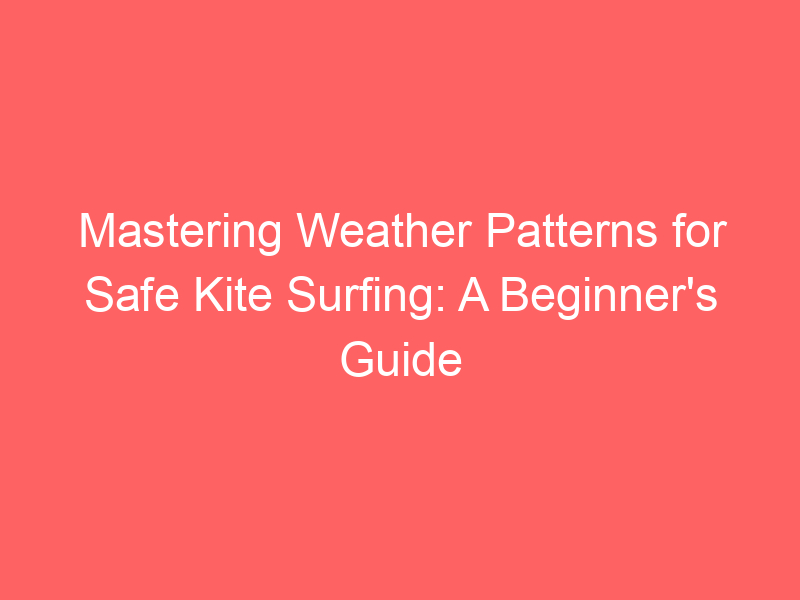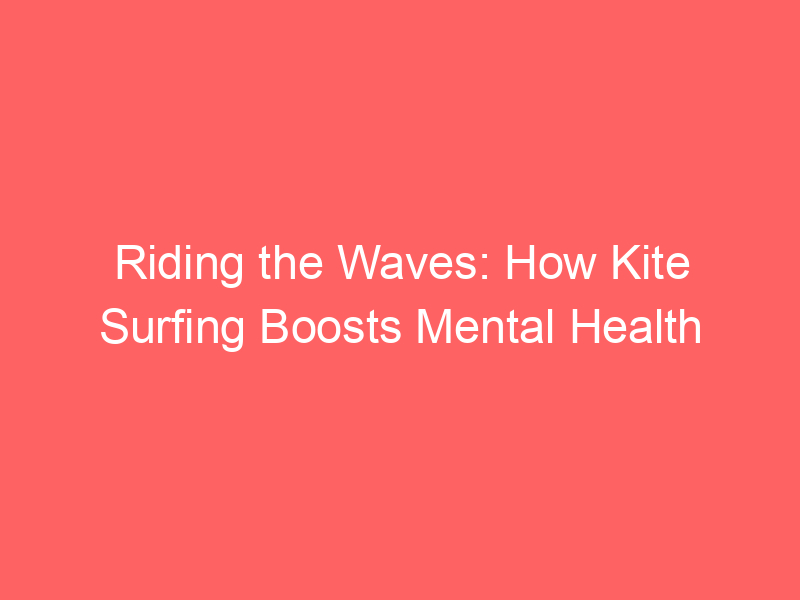Kitesurfing is an exhilarating water sport that has gained immense popularity in recent years. Combining elements of surfing, wakeboarding, and paragliding, it allows you to harness the power of the wind to ride across the water’s surface.
This exciting activity offers a unique way to connect with nature, get a great workout, and experience the thrill of speed and airtime.
Before you can enjoy the full experience of kitesurfing, it’s crucial to have a solid understanding of the sport and its requirements.
Safety is paramount, so investing time in learning the basics, choosing the right gear, and finding the perfect location will set you up for success.
Just as important is joining a kitesurfing community, where you can connect with others, exchange tips, and even participate in events.
Key Takeaways
- Acquire a strong grasp of kitesurfing fundamentals for a safe and enjoyable experience
- Select the appropriate equipment and location to start your kitesurfing journey
- Engage in kitesurfing communities for support, knowledge-sharing, and events
How To Start Kitesurfing

The Concept
Kitesurfing is an exhilarating water sport that combines elements of surfing, wakeboarding, and paragliding.
In kitesurfing, you control a large kite with a bar while standing on a kiteboard and riding the waves. The wind propels you across the water, allowing you to perform impressive jumps and tricks.
With the right skills, kitesurfing can be enjoyed by both beginners and experienced riders.
Equipment Required
To start kitesurfing, you will need the following essential gear:
- Kite: There are various types of kites available, such as bow, c-shaped, and delta kites. Choose the appropriate kite depending on your skill level and the wind conditions.
- Kiteboard: Select a kiteboard designed for your body weight and skill level. Beginners should opt for a larger, more stable board, while advanced riders may prefer smaller, more agile boards.
- Harness: A harness or trapeze, worn around your waist or chest, connects you to the kite’s control bar. It should fit snugly and comfortably without restricting your movement.
- Control Bar: The control bar with lines allows you to steer the kite, adjust the power, and perform tricks.
- Wetsuit: You will need a wetsuit suitable for the water temperature and local climate conditions. Optimal wetsuit thickness depends on the water temperature.
- Safety Gear: Always wear a life jacket, helmet, and, if necessary, impact vest to protect yourself while kitesurfing.
Safety Measures
Before venturing into the water for kitesurfing, follow these safety measures:
- Learn the basics: Take professional lessons from a certified instructor to acquire essential skills and safety procedures. Start by learning how to fly the kite and progress to more advanced techniques step-by-step.
- Check weather conditions: Ensure the wind and weather are suitable for kiting. Strong, gusty, or erratic winds can make kitesurfing dangerous for beginners.
- Assess the environment: Examine the beach, water, and any potential obstacles before kitesurfing. Look out for swimmers, other water users, and potential hazards.
- Use appropriate safety equipment: Always wear a helmet, life jacket, and impact vest when kitesurfing, to minimize injury risk.
- Practice self-rescue techniques: Learn and practice self-rescue methods, such as controlled self-landing and relaunch, to handle difficult situations independently.
Finding the Right Location

When it comes to starting kitesurfing, one of the most critical aspects is finding the perfect location. The right spot will ensure you have the best experience possible and make learning significantly easier.
Begin by looking for open ocean beaches with consistent wind directions, as it helps you learn techniques more effortlessly and safely source.
Make sure that the chosen location has steady and robust wind, but not too strong, to avoid struggling with controlling the kite.
Here’s a checklist for you to consider when finding the ideal location:
- Reliable Wind Conditions: Look for beaches known for their consistent wind, as it is crucial to practice kitesurfing regularly.
- Flat Water Spots: As a beginner, it’s best to learn on flat water, as it provides more control over the kitesurfing board.
- Safe Environment: Choose places without obstacles like rocks, buoys, or other hazards, offering ample space to practice safely.
- Accessible Facilities: The location should have facilities like restrooms and nearby parking, making the overall experience more convenient.
Researching online or talking to local kitesurfers and instructors can provide valuable insights into the best locations near you.
Additionally, websites such as Ride Engine offer information on kitesurfing spots worldwide, making it easier to explore new destinations.
Remember that as your skills improve, you can venture to different beaches and conditions to expand your kitesurfing repertoire.
By selecting the right location, you’ll have a positive learning experience and develop a lifelong passion for the sport.
Choosing the Right Gear

Selecting a Kite
When starting your kitesurfing journey, selecting the right kite is essential for a safe and enjoyable experience.
As a beginner, your focus should be on finding a kite that’s easy to control and provides good stability.
Generally, modern kitesurfing kites use either four or five lines made of materials like Dyneema/Spectra and Kevlar, which offer minimal stretch and are ideal for water-based sports.
Consider the prevailing wind conditions of the area where you’ll be kitesurfing and your ideal setup.
A common starting configuration for beginners is 7m, 9m, and 12m kites, which cover a wide range of wind conditions.
Choosing a Board
The next item on your kitesurfing list is selecting a proper board. It’s important to find a board that’s user-friendly and helps build your confidence as you progress.
As a beginner, you should consider choosing larger boards with a higher volume, as they offer more stability and are easier to balance.
When selecting a board, also consider your body weight and skill level. Lighter riders may prefer smaller boards, while heavier riders might opt for larger boards for better buoyancy.
As you progress in skill, you may eventually transition to smaller boards that allow for increased maneuverability and control.
Remember, the key to success in kitesurfing is choosing the right gear, investing in proper training, and practicing regularly.
With the right equipment and dedication, you’ll be well on your way to mastering this exhilarating sport.
Learning the Basics

Kitesurfing can be an exciting and rewarding sport, but it’s essential to learn the basics before diving into it.
In this section, we’ll discuss mastering kite control and maintaining balance, two fundamental skills in kitesurfing.
Mastering Kite Control
The first step in learning kitesurfing is to gain control over your kite. Begin by practicing on land with a trainer kite, which is smaller and easier to handle than a full-sized one.
Spend time understanding how the kite responds to your movements and developing a feel for the wind direction.
While practicing, make sure to maintain a proper stance: your feet should be shoulder-width apart, knees slightly bent, and your body leaning back.
This position will allow you to react quickly and stay in control of the kite.
Some essential techniques for kite control include launching, landing, and steering. Focus on learning how to smoothly and safely launch the kite, making sure it fills with air and gently lifts off the ground.
Once you’ve mastered launching, practice landing the kite and steering it in different directions. These skills are crucial for a successful kitesurfing experience.
Maintaining Balance
Once you feel confident controlling your kite, it’s time to work on maintaining balance while on the water.
Start by practicing on a board without the kite, simulating the movements you’d make while kitesurfing.
This exercise will help you become familiar with the board and how your body should move to maintain balance.
To develop your balance, focus on keeping your weight centered over the board and your knees slightly bent.
When you’re riding, avoid looking at your feet or the kite; instead, keep your eyes on the horizon. This will help you maintain a balanced and natural position while kitesurfing.
As you progress in the sport, you can also experiment with different board sizes and styles, as well as fin configurations, to find what works best for your skill level and personal preferences.
Remember, practice and patience are key to mastering these basics.
Dedicate time to honing these skills on and off the water, and you’ll be well on your way to becoming a confident and skilled kitesurfer.
Starting Your Kitesurfing Journey

Taking Off
Before you start kitesurfing, it’s crucial to understand the basics. First, ensure you’re in a safe and suitable environment with a spacious and uncrowded beach with consistent winds.
It’s advisable to get a few kitesurfing lessons from an instructor to learn the fundamentals.
When trying to take off for the first time, begin by practicing on land. This will help you:
- Familiarize yourself with the kite’s power and control inputs
- Learn proper steering techniques
Remember, patience and persistence are key as you gradually progress from land to water.
Steering and Manoeuvering
After taking off, your primary focus should shift to steering and maneuvering the kite. These tips will help you improve:
- Control the kite using the bar: Applying gentle pressure on one side of the bar will steer the kite in that direction.
- Maintain a steady body position: Keep your knees slightly bent and your body weight centered over the board. This will provide stability and make it easier to shift your weight when necessary.
- Follow the wind: As you glide across the water, pay attention to the wind’s direction. Position your kite at a 45-degree angle to the wind and maintain control as you ride.
- Practicing body dragging: This skill is crucial for rescuing your board when you fall off. Practice steering your kite using only one hand while dragging yourself through the water with the other.
By mastering these techniques, you’ll be well on your way to enjoying the excitement and adrenaline that kitesurfing offers.
Progressing Your Skills

As you become more comfortable with the basics of kitesurfing, it’s time to progress your skills and challenge yourself with new techniques.
This section will cover two key areas to focus on: Jumping Techniques and Advanced Manoeuvers.
Jumping Techniques
Jumping is an exhilarating aspect of kitesurfing that allows you to soar above the water.
To start practicing jumps, follow these steps:
- Build up speed: Ride at a comfortable speed with your kite at a 45-degree angle to the water.
- Edge hard: Lean back and edge the board into the water, creating tension in the lines.
- Pop off the water: As you feel the lines tighten, shift your weight over the back foot and release the edge, allowing the kite to lift you upward.
- Tuck your knees: To gain more height and control, tuck your knees towards your chest during the jump.
- Land smoothly: Spot your landing, extend your legs, and lean forward to absorb the impact and maintain your balance.
Practice these steps regularly to improve your jumping technique and increase your confidence in the air.
Advanced Manoeuvers
Once you’re comfortable with jumping, you can explore advanced manoeuvers to further enhance your kitesurfing skills. Some popular tricks include:
- Toeside turns: Transition from a heelside ride to a toeside position by shifting your weight and changing the direction of your board. This guide can provide more tips on mastering toeside turns.
- Grabs: While in the air, grab the edge of your board with one hand to add style and control to your jumps. Try various grab positions for a diverse range of tricks.
- Spins and rotations: Introduce spins and rotations into your jumps by turning your body and board in the desired direction. Start with a basic 180-degree spin and progress to 360s and beyond.
- Inverted tricks: Advanced kitesurfers can attempt inverted tricks, such as the kite loop or handle pass, which requires flipping the board and changing the kite’s direction simultaneously.
Remember to practice these advanced maneuvers in a controlled environment with appropriate safety equipment.
Further, consider taking lessons from a qualified instructor to sharpen your skills and ensure proper technique.
Maintaining Equipment

Starting your kitesurfing journey means taking proper care of your equipment to ensure safe usage and prolong its lifespan.
First and foremost, it’s your responsibility to inspect the condition of your gear before each session.
Checking your kite, lines, and safety system is crucial for your safety and the equipment’s longevity.
Investing in a complete set of gear usually includes a kite, kiteboard, control bar/harness system, and wetsuit.
Proper maintenance of your kitesurfing equipment will help you make the most out of your investment.
Kite Care: When it comes to caring for your kite, it’s essential to avoid letting it flap in the wind. Flapping can cause deformation and degradation of the kite.
To prevent this, direct the front of the kite towards the ground and “squash it” against the floor with sand to keep it in place.
Patch small kite canopy tears using scissors to round the edges and clean the area with alcohol for better adhesion. Yet, for larger damages, have it re-stitched professionally.
Kiteboard Care: Protecting your kiteboard from scratches and dings is crucial, especially on the board’s base. Clean your board regularly with mild soap and water, and avoid using chemicals.
It’s a good idea to rinse the bindings and screws with fresh water after each session to remove salt, sand, and debris, which can cause rusting over time.
Control Bar and Harness Care: Inspect your control bar’s lines, safety release system, and depower system regularly.
Replace any worn or damaged lines, and rinse the entire bar system with fresh water after each use, paying close attention to the safety release system.
Your harness is also essential for safety, so make sure the straps, buckles, and ropes don’t have any noticeable wear and tear.
Maintaining your kitesurfing equipment not only ensures your safety on the water but also extends its lifespan.
Regular inspections, cleaning, and proper storage will give you peace of mind and allow you to enjoy kitesurfing for years to come.
Joining Kitesurfing Communities

Joining a kitesurfing community can significantly enhance your skills and enjoyment of the sport.
Being part of a group provides support, encouragement, and an opportunity to learn from experienced kitesurfers.
It also helps you stay informed about local events, lessons, and ideal kitesurfing spots.
When joining a community, consider both online and offline groups. Online forums and social media platforms offer a chance to connect with kitesurfers from around the world.
Share your experiences, ask questions, and gain valuable insights from a diverse range of participants.
In addition to online communities, look for local kitesurfing clubs and associations. These groups often host events, training sessions, and meetups, providing an opportunity to develop your skills in person.
Local clubs like the AKA American Kitefliers Association can also connect you with experienced instructors and valuable resources.
Remember to respect the guidelines and norms of each community.
This includes following safety guidelines, being respectful to other members, and actively contributing to discussions and events.
By doing this, you will not only become a better kitesurfer but also help foster a positive and supportive atmosphere within the community.
Frequently Asked Questions
What do I need to start kitesurfing?
To start kitesurfing, you’ll need some basic equipment, including a kite, a board, a harness, and a safety leash. You should also consider investing in a helmet and a buoyancy aid for protection.
Besides, it’s essential to take some lessons with a certified instructor before attempting to kitesurf on your own. This will help you develop the skills and knowledge necessary to safely enjoy the sport.
What’s the difference between kitesurfing and kiteboarding?
Kitesurfing and kiteboarding are often used interchangeably to describe the same sport. Both terms refer to the activity of riding on a board while holding onto a kite that propels you across the water.
Some people may use “kiteboarding” to emphasize riding on a board, while “kitesurfing” may refer more to the act of catching waves and surf-style riding, but both involve using a kite for propulsion.
How long does it take to learn kitesurfing?
The amount of time it takes to learn kitesurfing varies depending on the individual learner and factors such as fitness level, previous experience with board sports, and the quality and consistency of instruction.
On average, it may take anywhere from a few days to several weeks of lessons and practice to become comfortable with kitesurfing. Consistent practice and patience are key to successfully mastering the sport.
Can I teach myself to kitesurf?
While it may be tempting to try to teach yourself to kitesurf, it’s not recommended. Kitesurfing can be a dangerous sport if not learned properly, and taking lessons from a certified instructor is the best way to ensure your safety and develop the skills necessary to enjoy the sport confidently.
There are many nuances to controlling the kite and managing your body position and balance, which are best learned with the guidance of an experienced professional.
Where should I go to learn kitesurfing?
To learn kitesurfing, you should look for a reputable school or certified instructor in your area or at a popular kitesurfing destination. Check the IKO website for a list of internationally recognized instructors and schools.
When choosing a location, consider factors such as water conditions, wind patterns, and the local kitesurfing community.
It’s essential to learn in an environment where you feel comfortable and supported.
What is the best equipment for a beginner kitesurfer?
As a beginner kitesurfer, it’s crucial to choose the right equipment tailored to your skill level. Start with a kite that’s specifically designed for beginners, with a size appropriate for your weight and the wind conditions in your area.
A larger board will provide more stability and help you progress faster in the early stages of learning. Additionally, invest in a comfortable harness and safety gear such as a helmet, buoyancy aid, and safety leash.
Consult with your instructor or a local kitesurfing shop for recommendations on the best equipment for your specific needs.
